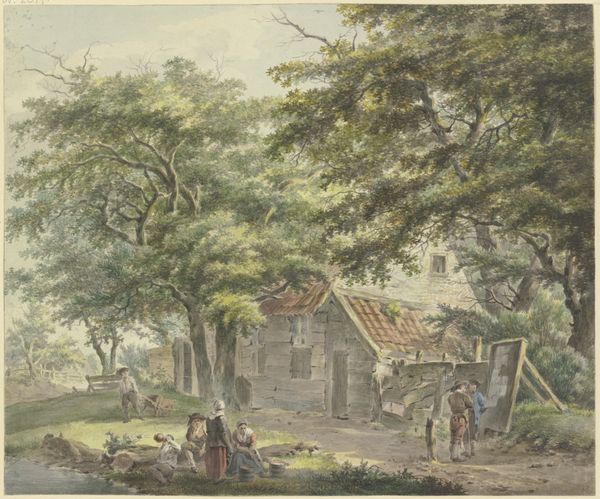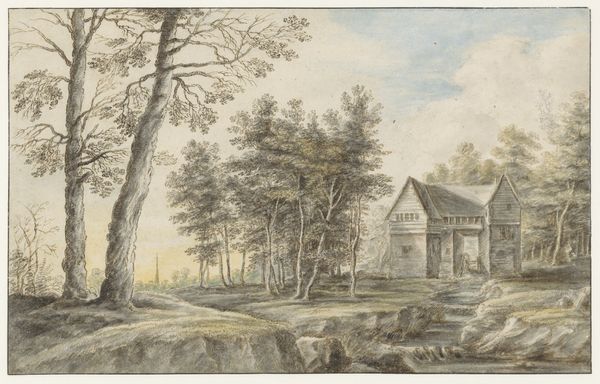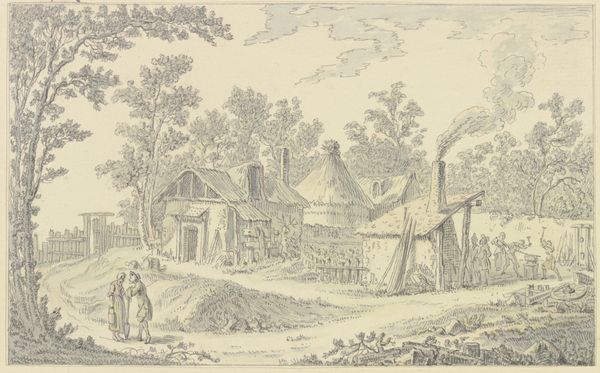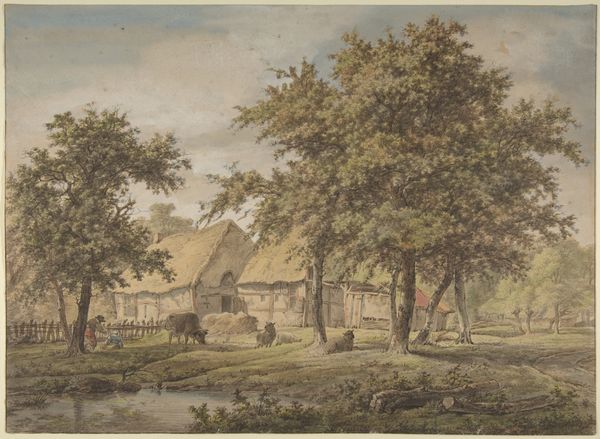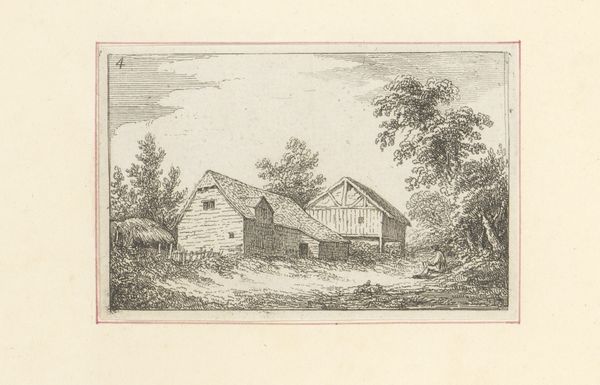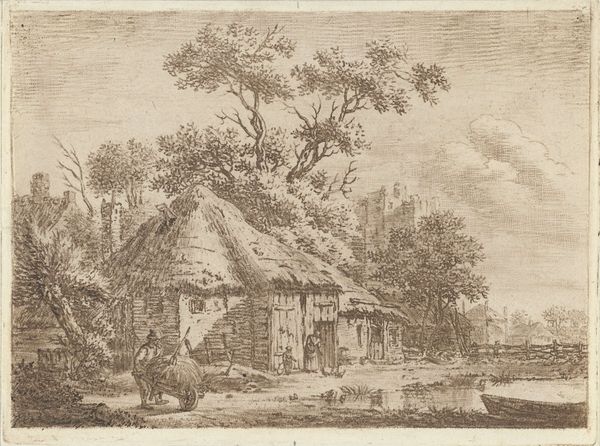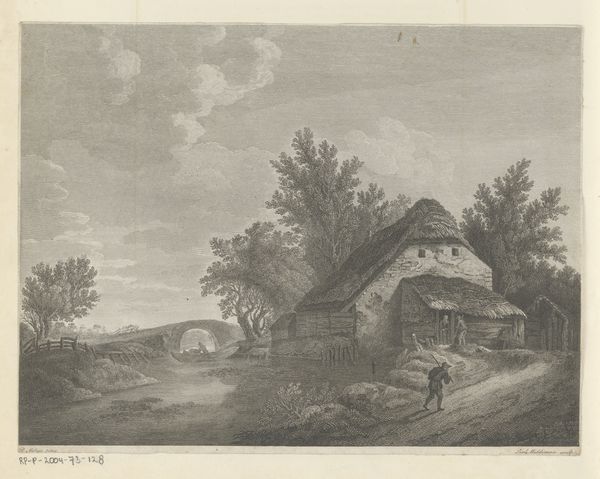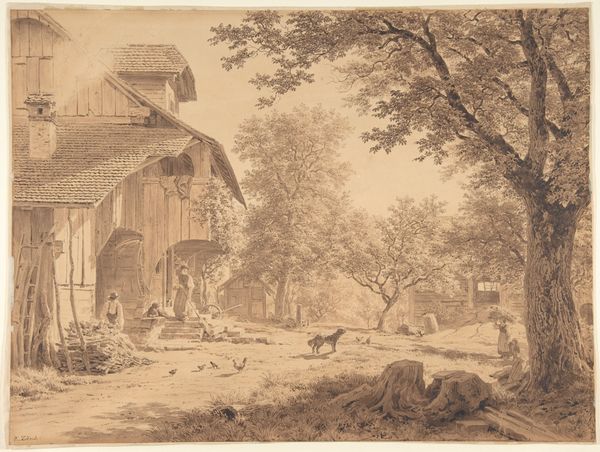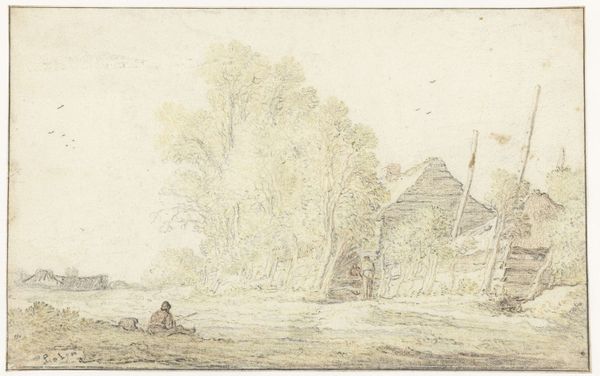
plein-air, watercolor
#
plein-air
#
landscape
#
watercolor
#
romanticism
#
genre-painting
Dimensions: height 243 mm, width 335 mm
Copyright: Rijks Museum: Open Domain
This watercolor landscape with a watermill was made by Pieter de Goeje, who lived in the late 18th and early to mid-19th century. Watercolor, as a painting medium, is intimately tied to paper, and demands a lightness of touch. Here, De Goeje uses watercolor in a particularly subtle way. The fine grain of the paper is visible throughout the image, and the translucent washes allow the white of the page to subtly illuminate the scene. These aspects are crucial to the image’s overall effect, lending an airy, idyllic quality to the rural scene. We also see an interesting contrast in the way the mill is depicted. It is shown as a picturesque object despite the fact that it was central to the economic basis of rural life. By emphasizing the aesthetic qualities of this site of industry, De Goeje reveals the complex relationship between artistic representation and the realities of labor, politics, and consumption in the pre-industrial era.
Comments
No comments
Be the first to comment and join the conversation on the ultimate creative platform.
